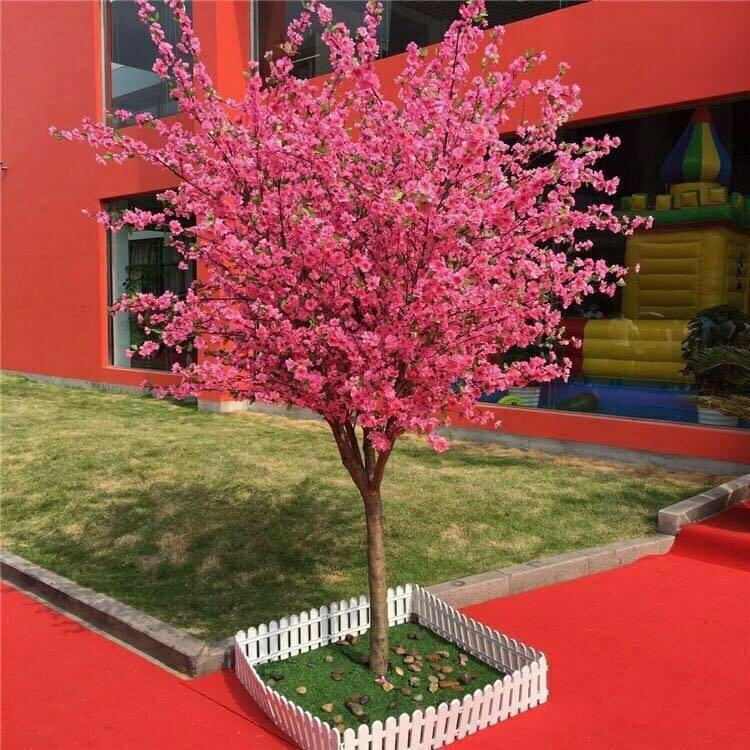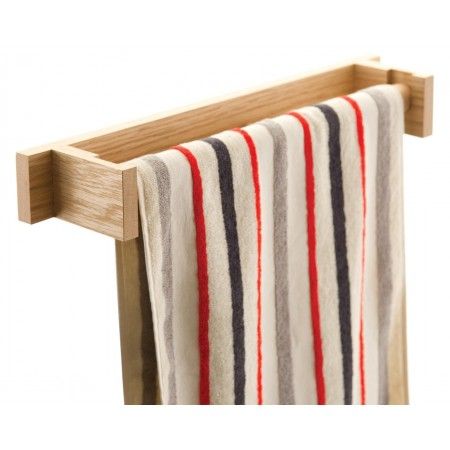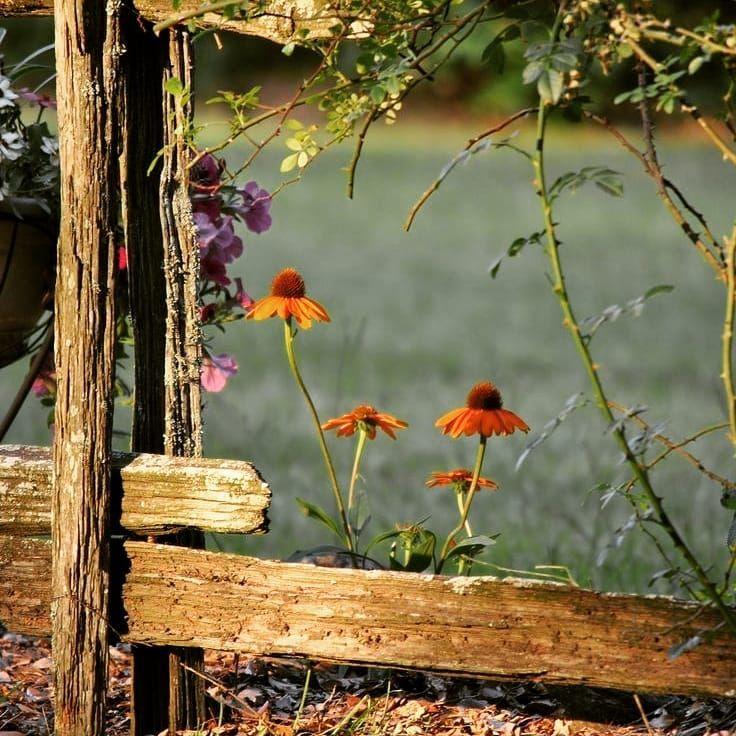Growing conditions for spinach
Growing Spinach, A Cool-Season Vegetable
Spinach (Spinacia oleracea) is a vitamin-rich, delicious, leafy green that is best grown in the cool weather of either spring or fall. The many varieties of spinach include smooth-leaf, savoy or curly leaf, arrowhead, and savory. It can be eaten raw or cooked. Spinach stores well in the refrigerator or can be blanched and frozen for later use. Spinach is versatile in the kitchen and packs a powerhouse of nutrients: iron; potassium; magnesium; vitamins A, B6, B9, C and E; and lutein.
Select a variety of spinach for growing and a garden area for planting. For best results, use fresh seeds as the germination rate for this crop deteriorates quickly. Always check the seed packet for specific varietal recommendations. A raised bed with good drainage is perfect for growing an early spring crop since the soil warms quickly and can be worked following just a few warm days. Spinach likes full sun but will tolerate partial shade. Prepare the planting bed by amending the soil with rich compost or aged manure. Mini-till or spade the ground and level it off with a rake. Mature spinach has a long taproot, so loosen the soil to between 12 and 18 inches. Sow the seeds ½ inch deep two inches apart, in rows 12 to 18 inches apart. If you are following intensive gardening plans, such as Mel Bartholomew's square foot gardening, plant 9 seeds per square foot. Make sure the soil is moist. You can grow spinach in a container, but choose varieties specifically suited to it, a container large enough for it, and a nutrient-rich soilless potting mix.
One key to successfully growing spinach is to plant the seeds when soil temperatures are cool. Spinach seeds germinate best in a soil temperature of 45⁰ F to 68⁰F. Recommendations are to plant spinach about four to eight weeks before your average last frost date in the spring and six to eight weeks before the average first frost date in the fall. Two crops per year can be achieved! Many home gardeners have become discouraged growing spinach because they start too late in the spring.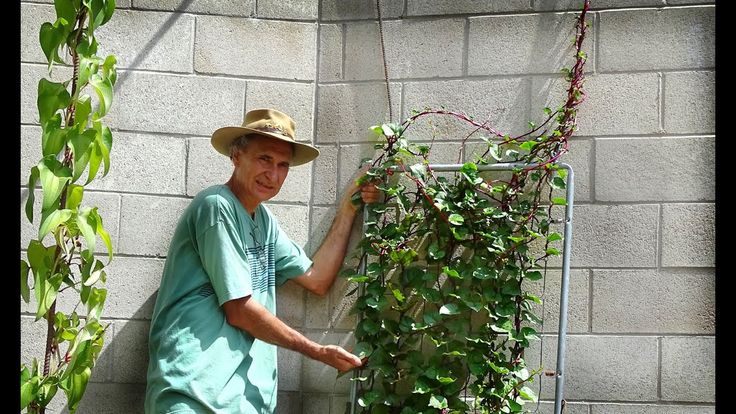 Understanding the relationship of spinach to temperature is critical to achieving success.
Understanding the relationship of spinach to temperature is critical to achieving success.
When planting in early spring, shelter the seeds with a clear polypropylene cover over the raised bed for the first few weeks. A framework over the bed keeps the plastic from direct contact with the spinach and prevents stem damage if snow, rain or ice builds up on the plastic cover. The plastic cover serves as a greenhouse, encouraging leaf growth on those early spring days.
Within 7 to 10 days, the first signs of sprouting usually appear as the cotyledon (seed leaves) emerge. During light rainy days, remove the plastic cover for a good soaking. Keep the cover on until the weather warms. Optimum growing temperature is 50⁰ F to 60⁰ F, but young seedlings can tolerate temperatures as low as 15⁰ F to 20⁰ F. Try to keep the soil consistently moist because spinach will bolt if the soil dries out. When spinach bolts, it sends up a strong central stem to produce seed, and it becomes bitter and inedible.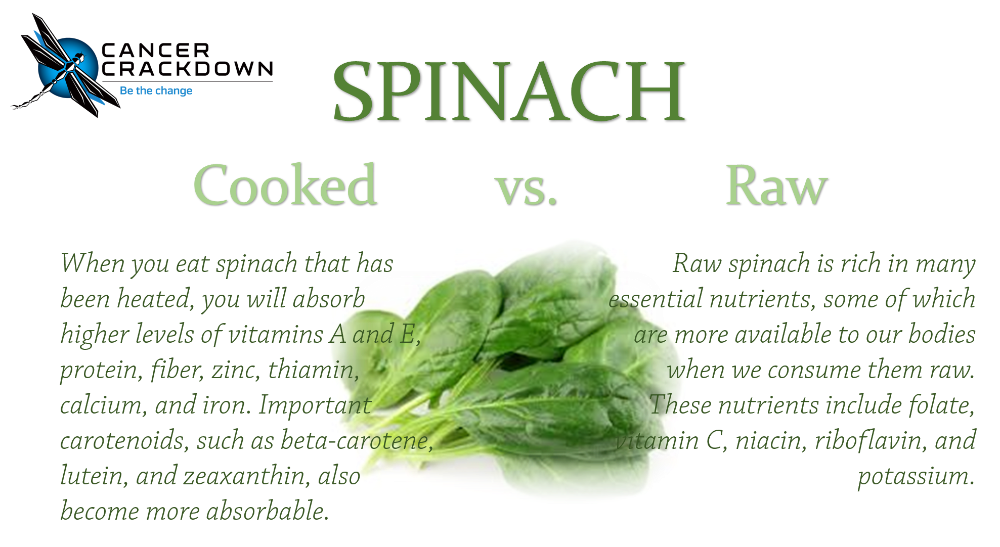 When you must supplement with irrigation, water the soil, not the plant leaves. Moisture on the leaves can encourage fungal diseases.
When you must supplement with irrigation, water the soil, not the plant leaves. Moisture on the leaves can encourage fungal diseases.
Thin out the plants as they reach two inches in height. Spinach plants need four to six inches of space to develop properly. Again, check the seed packet for specific varietal recommendations. Failure to thin out seedlings can result in stunted growth and premature bolting. Better spacing also decreases the plant's susceptibility to disease and pests. Roots are shallow at this stage, so be careful when thinning. Gently pull out all weeds when they are small so as not to disturb the spinach roots. Aphids and leaf miners are typical pests and removing weeds can help control the population.
Mulching the young plants will help keep the soil moist and cool and will also discourage weeds.
As daylight increases and temperatures warm to 70⁰F, cover with a shade cloth. This floating row cover will help cool the soil as well as control insects.
Begin harvesting the spinach leaves when they reach a nice size.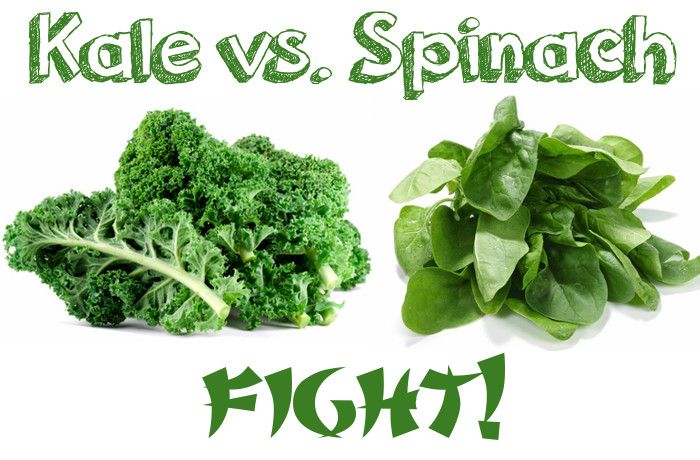 Leaves can become bitter and lose quality if left on the stem too long. Simply snip off the outer leaves at their base, leaving the main stem or rosette intact for further growth.
Leaves can become bitter and lose quality if left on the stem too long. Simply snip off the outer leaves at their base, leaving the main stem or rosette intact for further growth.
Once the days warm up and the temperature reaches the 80⁰F, spinach will want to bolt. Therefore, with a spring planting, this plant's productive life usually stops by the end of May. Spinach is also day-length sensitive. It will bolt in June even if the temperatures are cool. Pull out the plants and add them to your compost pile. Amend the soil with compost and reuse the bed for the next warm-season vegetable crop, such as beans or peppers.
For a fall crop, use the same season-extending methods as described above – only in reverse. Shade cloth can keep the soil cool during the early warmer days of fall. Plastic covers can keep the growing area warm enough to be able to harvest a crop into late fall or, with luck, early winter.
By understanding the growing requirements of spinach, you can be successful with two abundant crops each year.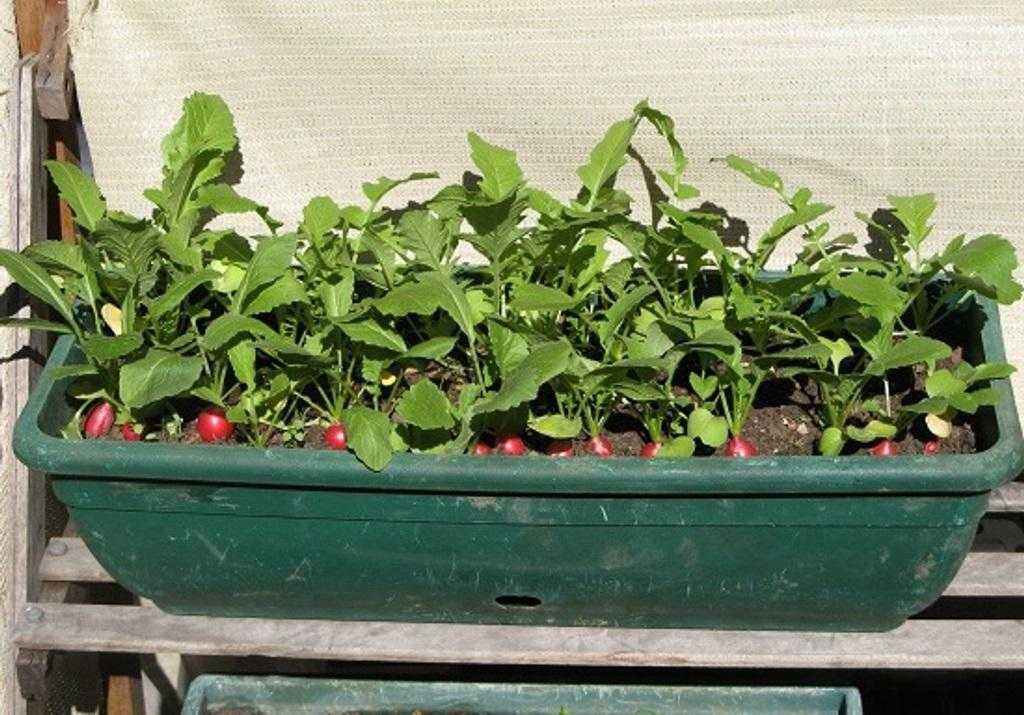 Enjoy your fresh picked, crisp leaf spinach in salads and cooked dishes. Visit Cut Cancer Risks with Spinach for recipes using spinach.
Enjoy your fresh picked, crisp leaf spinach in salads and cooked dishes. Visit Cut Cancer Risks with Spinach for recipes using spinach.
Spinach Planting & Spinach Growing
Spinach is a fast-growing plant, yielding many leaves in a short time in the mild weather of spring and fall. Get expert tips for growing spinach.
Spinach is a cool-weather vegetable related to beets and Swiss chard. A fast-growing plant, it yields many leaves in a short time in the mild weather of spring and fall. When growing spinach, the trick lies in making it last as long as possible, especially in the spring, when lengthening days shorten its life. One great way to do that is to start with vigorous young Bonnie Plants® spinach plants, which are already well on their way to maturity when you put them in your garden. Although it prefers full sun, spinach will still produce a respectable harvest in partial shade.
Quick Guide to Growing Spinach
- Plant spinach during the cool weather of spring and fall.

- Space spinach plants 12 inches apart in fertile, well-drained soil with a pH of 6.5 to 7.0.
- Start off the growing season right by mixing in several inches of aged compost or other rich organic matter into your native soil.
- Check soil moisture often or consider using a soaker hose to keep moisture levels consistent.
- For tender and rapid leaf production, feed regularly with a water-soluble plant food.
- Harvest spinach starting with the outermost leaves once leaves are large enough to eat.
Soil, Planting, and Care
Spinach grows most quickly in well-drained soil rich in organic matter such as compost or composted manure and with a pH of 6.5 to 7. A simple way to improve your existing soil is to mix 3 inches of aged compost-enriched Miracle-Gro® Performance Organics® All Purpose In-Ground Soil with the top 6 inches of existing soil. In order to grow spinach twice a year, plant it about 4 to 6 weeks before the last frost in the spring, and again 6 to 8 weeks before the first frost in the fall. Space plants 12 inches apart; this gives leaves room to reach full size. Perhaps the easiest growing option is to plant spinach in pots filled with premium quality potting mix, such as Miracle-Gro® Performance Organics® All Purpose Container Mix which will provide roots with just the right environment for strong growth.
Space plants 12 inches apart; this gives leaves room to reach full size. Perhaps the easiest growing option is to plant spinach in pots filled with premium quality potting mix, such as Miracle-Gro® Performance Organics® All Purpose Container Mix which will provide roots with just the right environment for strong growth.
For the most tender leaves, encourage spinach to grow fast and without interruption by fertilizing regularly with a water-soluble fertilizer like Miracle-Gro® Performance Organics® Edibles Plant Nutrition that feeds the soil along with the plants for better growth. (Be sure to follow directions.) This plant food works in tandem with great soil to help you achieve the best possible spinach harvest.
In the spring, plants will grow tall and bloom (called bolting) as soon as the days are longer than 14 hours. Heat also speeds up bolting, since spinach prefers temperatures between 35 and 75 degrees. Our variety is slow to bolt, which is a real bonus for gardeners who don't have the luxury of long stretches of mild weather.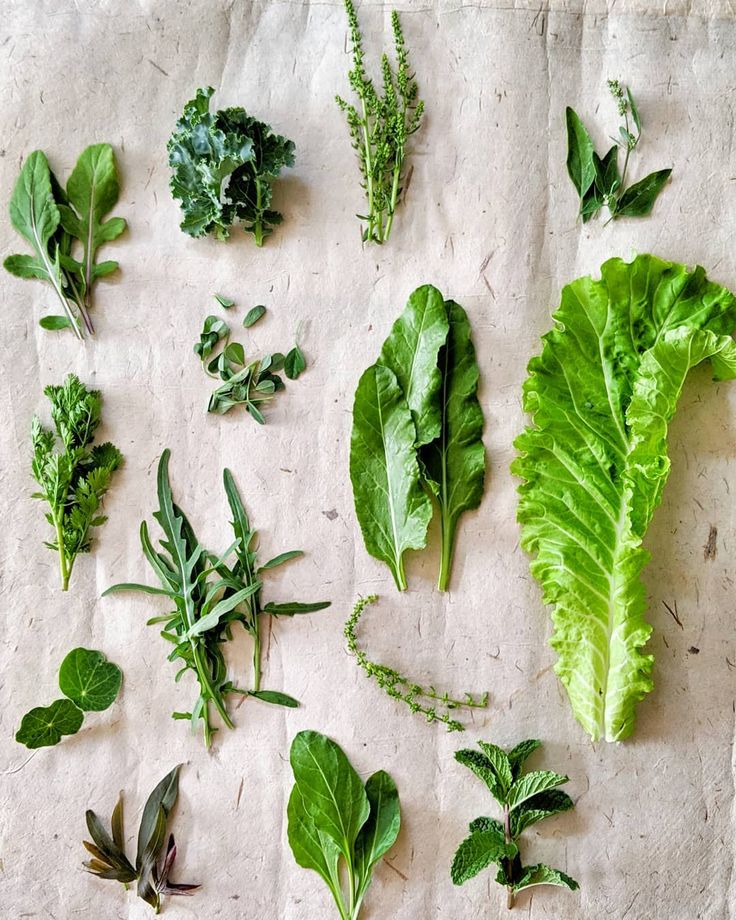
Because it bolts in the lengthening days of spring, spinach is an especially popular crop for fall, when days are short and cool. Plants are very cold-hardy, tolerating temperatures as cold as the teens to low 20s once they are well established. This quality makes them great for overwintering over in zones 8 and southward.
In cold climates, some gardeners plant spinach in a cold frame or cover plants with hay and leave them all winter; they'll be first to produce a very early spring harvest.
Troubleshooting
Heat and long days will end your crop, so plant as mentioned above. Pests that enjoy spinach include flea beetles, spider mites, and aphids, which feed on the leaves. Diseases that attack plants are downy mildew (a mildew that may appear during cool, moist weather) and white rust (which causes white spots on the leaves). For instructions on how to fight back against these pests and diseases, contact your local Extension agency.
Harvest and Storage
Spinach leaves are ready to harvest as soon as they are big enough to eat.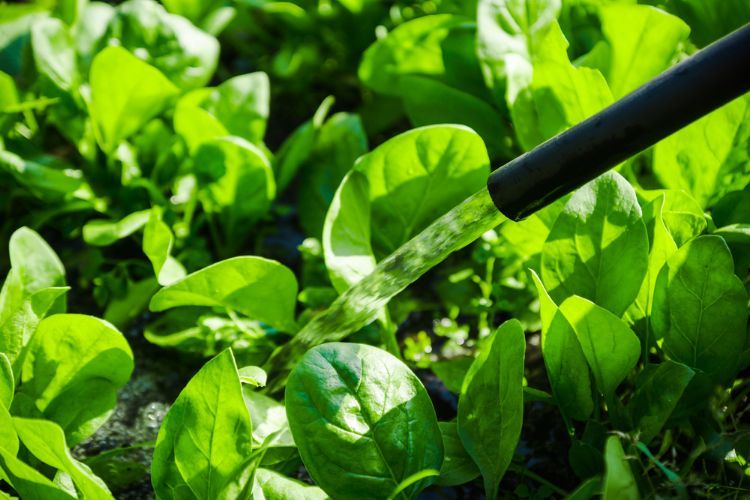 Harvest by removing only the outer leaves and allowing the center leaves to grow larger; this will allow the plant to keep producing. Picking the outer leaves also gives the advantage of briefly delaying bolting. In spring, when plants are about to bolt, pull the entire plant at once to enjoy the leaves before they become bitter.
Harvest by removing only the outer leaves and allowing the center leaves to grow larger; this will allow the plant to keep producing. Picking the outer leaves also gives the advantage of briefly delaying bolting. In spring, when plants are about to bolt, pull the entire plant at once to enjoy the leaves before they become bitter.
FAQs
When is the best time to plant spinach?
In late winter or early spring for a fast crop and again in late summer or early fall, after the hottest temperatures have passed. Spinach is a cool-weather vegetable.
How can I know when my spinach is ready for harvest? What is the method of harvesting?
When the outer leaves are about 6 inches long, they're ready to be harvested.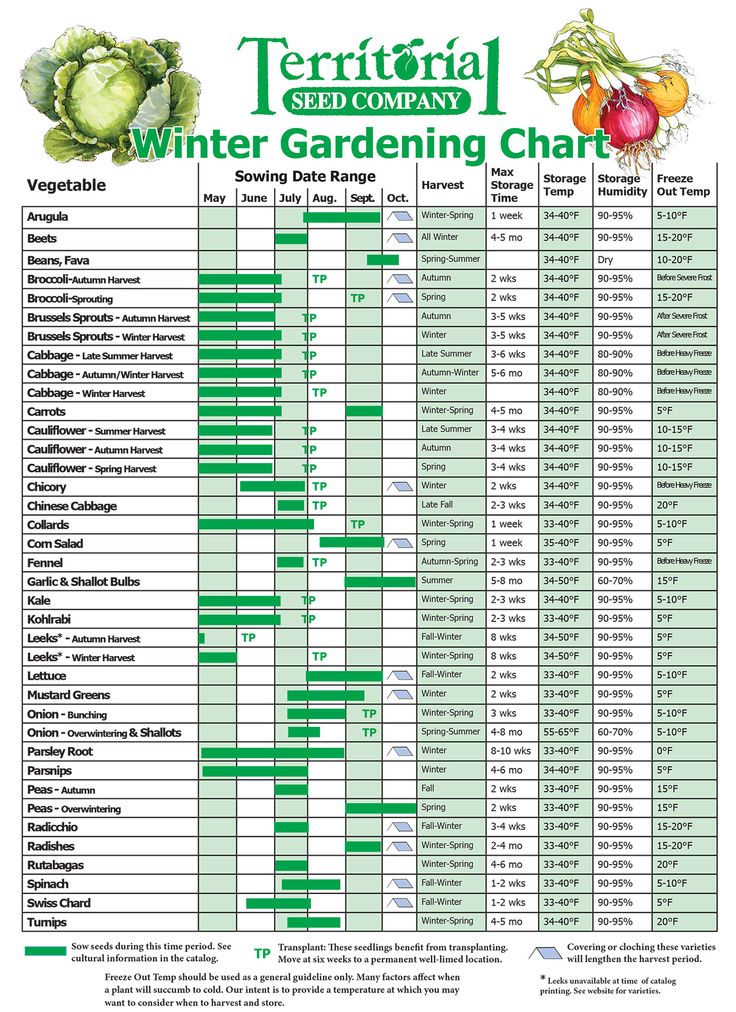 Or, if it is spring and plants are near the end of the season where they will soon bolt (bloom), you can pull up or cut the entire plant.
Or, if it is spring and plants are near the end of the season where they will soon bolt (bloom), you can pull up or cut the entire plant.
My spinach bolted, and I cut the plants just above the soil line. Will I get another crop from them?
No, they are finished. It is time to pull them up and replace them with a warm-weather crop. You can plant spinach again in late summer for a fall harvest.
Container Gardening Cool Season Gardening Fall Gardening Frost Growing Techniques Spinach Vegetables
growing from seeds in open ground and at home, harm and benefits, photo
Author: Elena N. https://floristics.info/en/index.php?option=com_contact&view=contact&id=19 Category: garden plants reprinted: Last amendments:
Content
- Planting and care for spinach
- Plant Spinach - Description
- Spinach sowing
- When to plant spinach
- Growing spinach from seeds
- Growing spinach on the windowsill
- How to grow spinach at home
- Growing spinach in open ground
- when
- Planting spinach in soil spinat Spinach nutrition
- What to plant after spinach
- Spinach pests and diseases
- Spinach diseases
- Spinach pests
In the middle of the 7th century, along the Great Silk Road, spinach came to China, where it was called the “Persian vegetable”.
 In Christian Europe - first in Sicily and Spain - spinach became known around the 13th century, but then a form of the plant was cultivated that is now forgotten. In Italy of the 15th century, green spinach was eaten during Lent, and in France, the Italian Catherine de Medici introduced the fashion to serve spinach at the table. Since the middle of the 16th century, spinach of the modern type has already been grown in Europe: broad-leaved, without bitterness and with round seeds.
In Christian Europe - first in Sicily and Spain - spinach became known around the 13th century, but then a form of the plant was cultivated that is now forgotten. In Italy of the 15th century, green spinach was eaten during Lent, and in France, the Italian Catherine de Medici introduced the fashion to serve spinach at the table. Since the middle of the 16th century, spinach of the modern type has already been grown in Europe: broad-leaved, without bitterness and with round seeds. In the first third of the 20th century, spinach boomed in popularity in the United States and Western countries because it was mistakenly believed to contain an incredible amount of iron. Remember cartoons about the sailor Popeye? However, later it turned out that there is 10 times less iron in spinach: the researcher simply forgot to put a comma in the number ... The excitement around spinach gradually subsided, but nevertheless, its producers erected a monument to the sailor Popeye in Texas in gratitude for popularizing the vegetable.
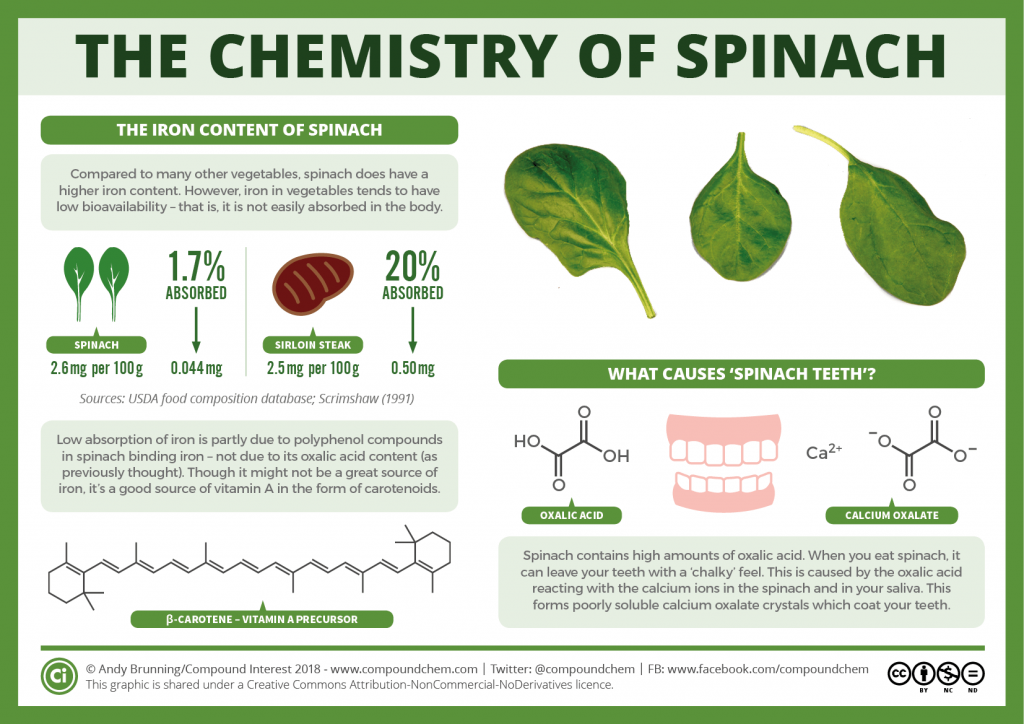
In Russia, spinach began to be eaten in the middle of the 18th century, but until the end of the next century it remained a little-known "master's" vegetable, which was served at the table with croutons and an egg, and even then spinach in Russia failed to gain wide popularity.
Currently, this crop is most in demand in China and the United States, and in America, three-quarters of the spinach crop is sold fresh. Spinach consumption in the United States has almost returned to the levels of the middle of the 20th century. Today, young spinach, the so-called baby spinach, with tender leaves up to 5 cm long, is gaining ground on the market.
Planting and caring for spinach soil - in the second half of May. Sowing seeds of early varieties directly into the ground - at the end of April, after which seeds can be sown by the conveyor method every two weeks: from sowing to harvesting - 5 weeks. Late varieties can be sown until mid-August to harvest in 6-7 weeks. Before winter, spinach seeds can be sown 6-8 weeks before the first frost - in mid-October.
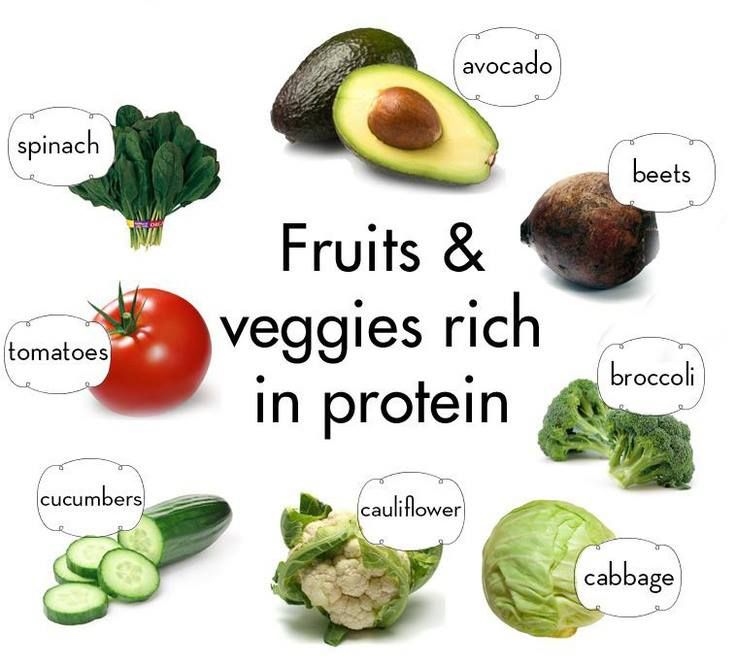
- Lighting: bright sunlight, partial shade and even shade.
- Soil: well-drained, slightly acidic loam, pH 6.5-7.0.
- Watering: for every m² of garden watering can with a sprinkler or a hose with a sprinkler head, a bucket of water is poured. In heat and drought, spinach is watered three times a week.
- Top dressing: if spinach growth is retarded, apply nitrogen fertilizer to the soil, but if the soil was fertilized before planting, top dressing is unlikely to be needed.
- Propagation: seed - seedling and non-seedling.
- Pests: mining and beet flies, gamma cutworm caterpillars, aphids, common mole crickets and boletus flies.
- Diseases: fusarium, peronosporosis, anthracnose, curliness, viral mosaic, ascochitosis, cercosporosis and ramulariasis.
- Properties: Spinach is the most valuable dietary product with a laxative, diuretic, anti-inflammatory and tonic effect.
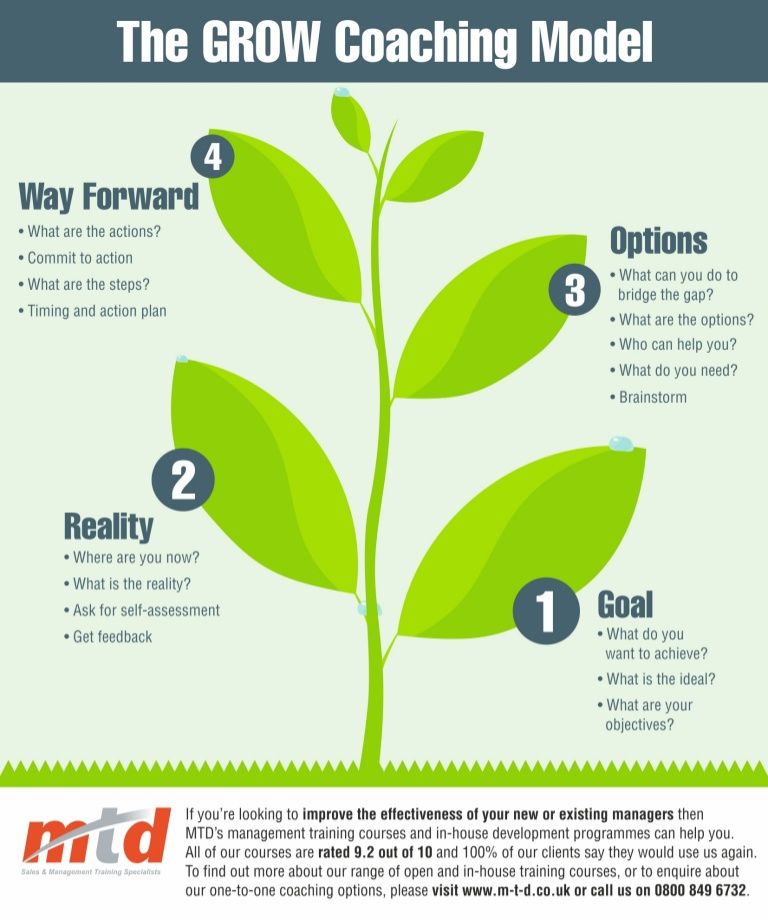
Read more about growing spinach below
Spinach plant - description
What does spinach look like? The height of the plant is from 25 to 50 cm or more. Its stems are bare, simple and branched. The lower basal leaves of spinach are petiolate, triangular-lanceolate, often with elongated lateral ears, or oval, oblong-ovate, entire, contracted into a petiole. The upper, and often the middle leaves are oblong, pointed, with a wedge-shaped base. Anther flowers with four stamens form a spike-paniculate inflorescence, and pistillate flowers are in dense glomeruli located in the axils of the leaves. The fruits of spinach are spherical or two-horned, sometimes soldered together, but, nevertheless, do not form seed.
Rosettes of spinach leaves, which form at the very beginning of the growing season, are used as food.
Sowing spinach for seedlings
When to plant spinach
Spinach, like any other herb, can be grown in a greenhouse, at home or in open ground.
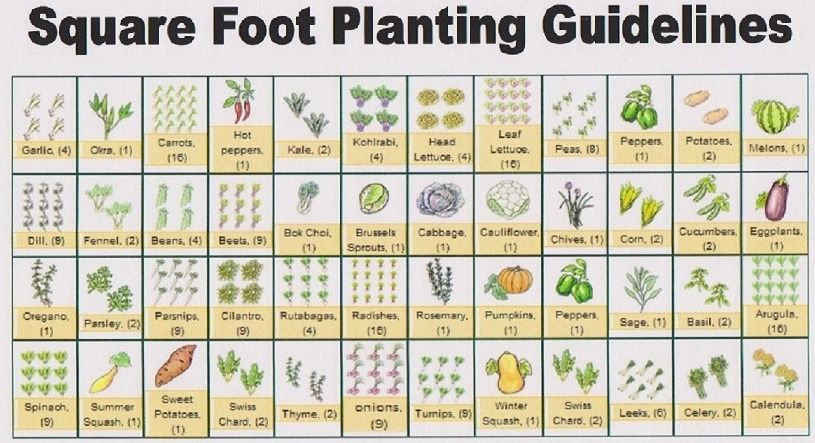 You can get the earliest greens if you pre-grow spinach seedlings. To do this, in late March or early April, spinach seeds are sown in boxes, paper or plastic cups filled with a moist, loose, disinfected substrate consisting of biohumus (1 part) and coconut fiber (2 parts). A layer of expanded clay 2-3 cm thick is placed under the substrate.
You can get the earliest greens if you pre-grow spinach seedlings. To do this, in late March or early April, spinach seeds are sown in boxes, paper or plastic cups filled with a moist, loose, disinfected substrate consisting of biohumus (1 part) and coconut fiber (2 parts). A layer of expanded clay 2-3 cm thick is placed under the substrate. Stubborn spinach seeds with a dense shell are soaked in water for two days before sowing, changing it every 6-8 hours. Then they are placed for disinfection for several hours in a pink solution of potassium permanganate, after which they are dried to flowability.
- Fermented mullein: how to make and how to use it to the maximum benefit for the crop?
Growing spinach from seeds
Spinach is sown to a depth of 1-1.5 cm, then the surface is slightly compacted, the crops are covered with film or glass and kept in a warm place until germination. As soon as the seeds begin to germinate, the film is removed, and the container is moved to the southeast or south window sill - the seedlings that have appeared will need a lot of light.
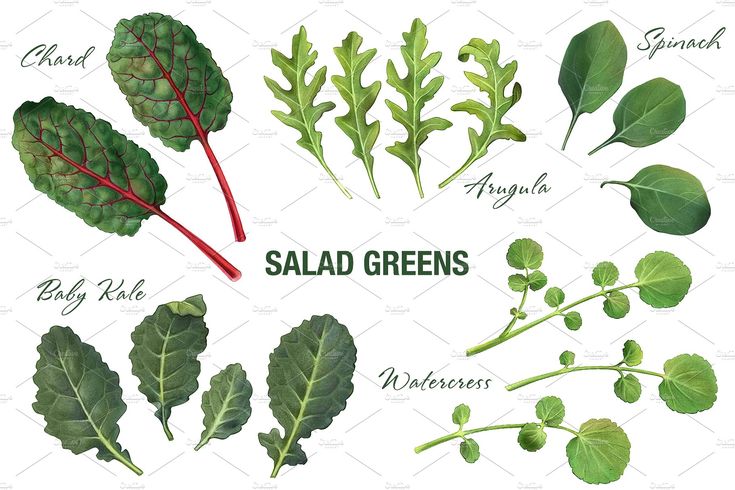 But spinach seedlings are undemanding to warmth: it can be grown even on an unheated loggia. Another condition for the successful development of seedlings, in addition to good lighting, is to keep the substrate slightly moist.
But spinach seedlings are undemanding to warmth: it can be grown even on an unheated loggia. Another condition for the successful development of seedlings, in addition to good lighting, is to keep the substrate slightly moist. Spinach is planted outdoors when the soil is warm. After transplanting, install metal arcs above the bed at a height of about 20 cm and cover the seedlings with agrofibre in case of night frosts and intense spring sun.
Growing spinach on the windowsill
How to grow spinach at home
If you want to grow spinach on the windowsill, keep in mind that the life of the bush is no more than two months: after a few cuts, the spinach releases a flower arrow, and its leaves lose their necessary for food quality. How to grow spinach at home? When growing a crop in the spring-summer period, the seedlings do not require supplementary lighting, but if spinach is grown from seeds in the autumn or winter, it can give a good harvest only if you organize daily additional lighting for it for 2-3 hours after the Sunset.
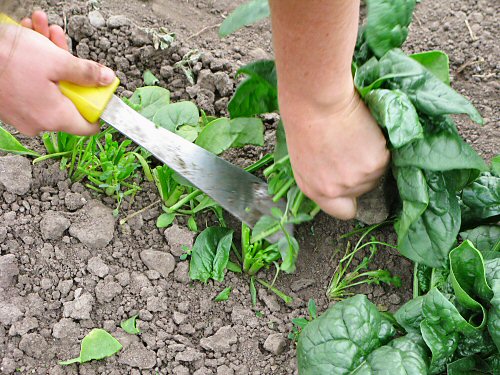
Sowing of prepared spinach seeds is carried out to a depth of 1-1.5 cm in the same substrate in which spinach seedlings are grown. Under the substrate, a layer of drainage 2-3 cm high is laid in the dishes. Spinach can be sown in boxes or containers at least 15 cm deep or in 1-2-liter pots, or you can grow seedlings in small cups, and in the development stage of seedlings 2- 4 real leaves, pick them into a permanent dish. Crops are covered with a film until germination.
Growing and caring for spinach at home is very easy. The optimum temperature for the development of spinach seedlings is 15 to 18 ºC, watering should be regular and sufficient, especially in summer, as drying out of the substrate provokes premature bolting. In addition, you will need to spray your spinach daily in the early morning or after sunset. As for dressings, when sowing spinach in fertile soil, they are not needed. Spinach greens for cutting will ripen, depending on the variety, 3-5 weeks after sowing, but after 1-2 months the bush will go into the arrow and new greens will stop growing.

Growing spinach outdoors
When to sow spinach outdoors
Because spinach is a hardy plant, it can be grown outdoors without the seedling stage. For a spring harvest, spinach is sown 4-6 weeks after the last spring frost, and for an autumn harvest, 6-8 weeks before the first autumn cold. In the spring, as soon as it warms up and the sun shines for 14 hours a day, small flowers will appear on the spinach - a process called flowering or shooting, and it makes the leaves of the plant unfit for consumption. Therefore, many gardeners prefer to sow spinach in the fall. In the spring, at the end of April, early varieties of spinach are sown. You can sow the plant several times every 15-20 days. No more than 5 weeks pass from sowing to harvesting. Late varieties are sown until mid-August - they give a harvest in 6-7 weeks.
You can also sow spinach before winter - in mid-October. Before the onset of winter, the plant manages to form small rosettes, and in the spring, spinach left to winter in the ground will sprout very early, and in a couple of weeks you can include it in your diet.

- When to sow tomatoes for seedlings - a way to determine the timing for any region and climate!
Planting spinach in the ground
Planting and caring for spinach in the field is quick and easy. The site for the plant should be sunny, and although the plant will also grow well in the shade, its productivity will be lower than when grown in the sun. Spinach prefers drained slightly acidic loamy soils with a pH of 6.5-7.0. You can adjust the acidity of the soil by adding limestone to it: dolomitic limestone is added to soil that contains little magnesium, and calcite limestone is added to soil with a high magnesium content. Do this in the fall or at least 2-3 months before sowing.
Since the soil for spinach must be rich in organic matter, alfalfa, soybean or blood meal is added to it under deep digging. Or they dig up a site with mineral fertilizers from the following calculation: 30 g of superphosphate and 15 g of potassium chloride per 1 m².
 Before spring sowing, urea is introduced into the soil - 20 g per 1 m².
Before spring sowing, urea is introduced into the soil - 20 g per 1 m². Spinach is sown in rows to a depth of 2 cm at row spacing of 20-30 cm, placing the seeds at a distance of 5-8 cm from each other. After planting the seeds, the surface is lightly compacted with the back side of the rake, watered, covered with burlap for 3-4 days, and a plastic film is thrown onto the arched supports installed in advance at a height of about 20 cm. Seeds germinate at a temperature of 2 to 5 ºC in about 10-14 days.
When the seedlings have formed a rosette of 2-3 leaves, thin out the spinach - ideally the bushes should grow at such a distance from each other that they barely touch the leaves. Spinach care consists of regular watering, weeding, loosening the soil around the plants and protecting the spinach from the sun with a shade net when the air temperature rises to 26 ºC.
Watering spinach
Spinach is very moisture-loving. For watering it, it is better to use a hose with a sprinkler nozzle or a garden watering can with a splitter, but remember that with strong pressure you can wash away fragile shoots.
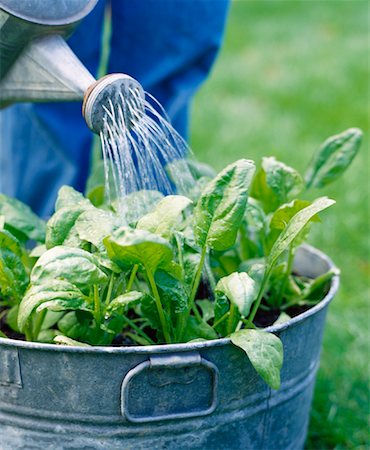 Approximately one bucket of water is consumed per m² of beds. In dry, hot weather, watering is carried out at least three times a week, and in order to prevent water from spreading, make a furrow around the perimeter of the beds. After watering, when the water is absorbed and the surface of the soil is slightly dry, loosen the soil around the plants and remove the weeds. If you notice flower arrows on spinach, break them off.
Approximately one bucket of water is consumed per m² of beds. In dry, hot weather, watering is carried out at least three times a week, and in order to prevent water from spreading, make a furrow around the perimeter of the beds. After watering, when the water is absorbed and the surface of the soil is slightly dry, loosen the soil around the plants and remove the weeds. If you notice flower arrows on spinach, break them off. Fertilizing spinach
If spinach grows well in the field, then it has enough nutrients in the soil, but if spinach grows slowly, feed it with a nitrogen fertilizer: cudweed meal or blood meal. Fertilizers are applied to a depth of several centimeters, after which the site is watered. In general, spinach needs top dressing only if the area was not fertilized before sowing or planting seedlings.
What to plant after spinach
To prevent soil depletion, spinach can be grown on one plot with a break of 3-4 years. According to the laws of crop rotation, roots are usually grown after tops, that is, after spinach, you can plant Jerusalem artichoke, swede, radish, radish, daikon, katran, turnip and other tuberous or root plants.
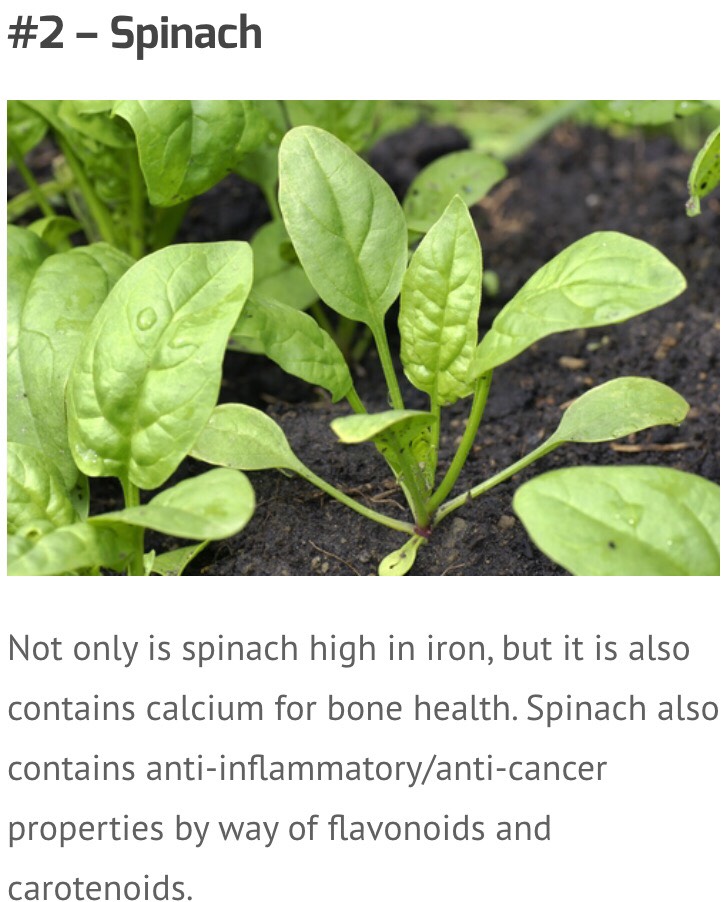
- How to speed up the tying of cabbage heads
Pests and diseases of spinach
Diseases of spinach
The most harmful diseases of spinach are fusarium, downy mildew, anthracnose, curl and viral mosaic. Spinach can also be affected by diseases such as ascochitosis, cercosporosis and ramulariasis.
Fusarium wilt, or root rot is a dangerous fungal disease that affects seedlings and young plants. In specimens affected by Fusarium, the color becomes dull, they begin to lag behind in growth, their leaves lose turgor, turn yellow, and the plants die. The process begins with the lower leaves, and when the plant is dug up, its roots are found to be rotten. You will not succeed in curing spinach from fusarium, especially if the process has covered the entire plant, so the affected bushes must be removed from the garden. As a preventive measure, you need to grow disease-resistant varieties of spinach, make sure that the bushes do not grow too close to each other, regularly loosen the soil around them and remove weeds, and the seeds must be disinfected with a solution of potassium permanganate before sowing.

Downy mildew, or Downy mildew is a fungal disease that appears as yellowish spots on the upper side of spinach leaves, while a grayish coating forms on their underside. Then the spots acquire a brown-brown hue, the leaves droop, wrinkle, dry out and crumble. The disease progresses in cool damp weather. Ways to protect against peronosporosis, as well as from root rot, are mainly preventive, since when using chemical preparations, the toxic substances contained in them, accumulating in the leaves, will make them unsuitable for food. Folk remedies for fighting fungal diseases can come to the rescue:
- treatment of plants with a solution of 10 drops of 5% pharmacy iodine in 1 liter of milk, which is then mixed with 9 liters of water;
- treatment of spinach with an ash solution: 2 cups of ash are brewed with three liters of boiling water, allowed to cool, filtered through a triple layer of gauze, diluted with 10 liters of water and spinach is treated with this solution;
- 200-300 g of onion peel are poured into 10 liters of water, brought to a boil, allowed to infuse for 1-2 days, filtered and treated with infusion of the plant;
- 1-1.
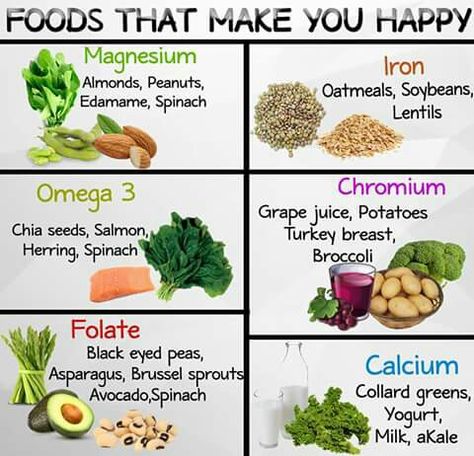 5 g of potassium permanganate is diluted in 10 liters of water and sprayed with a solution of spinach.
5 g of potassium permanganate is diluted in 10 liters of water and sprayed with a solution of spinach.
Anthracnose covers the leaves and their petioles with rounded dark spots, in the center of which there are black raised pads.
Cercosporosis also affects the leaves and stems of spinach. First, rounded spots with a diameter of 2-4 mm are formed on them - red-brown with an ashy middle. Then the spots grow, merge with each other, the tissue inside the spots becomes thinner, dries and spills out, leaving holes in the leaf plates.
With ascochitosis , spots also appear on leaves and stems: convex, of various shapes and colors, but most often brown with a dark border. Affected tissues gradually dry out.
Ramularia blight, or leaf spot covers spinach leaves with grey-brown spots with dark edges. With the development of the disease, the leaves die.
Cucumber mosaic viruses and can be stored in soil, on seeds and plant debris and transmitted by sucking insects.
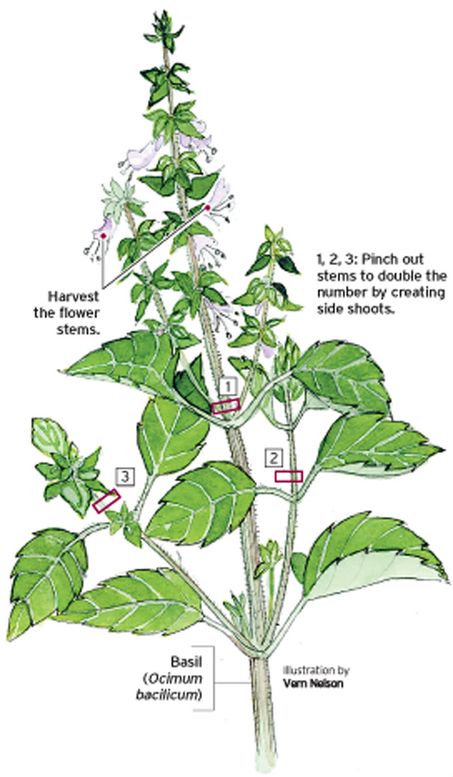 Viruses penetrate the plant through damaged tissues, their presence is manifested by the formation of yellow or light green strokes and star-shaped spots on spinach leaves, which gradually merge with each other. The leaves are deformed, stunted, become dwarfed.
Viruses penetrate the plant through damaged tissues, their presence is manifested by the formation of yellow or light green strokes and star-shaped spots on spinach leaves, which gradually merge with each other. The leaves are deformed, stunted, become dwarfed. Leaf curl results in thickening and uneven growth of the leaf tissue, causing the leaf to curl, become wavy and blistered. Curly hair is often accompanied by necrosis, spinach leaves dry up and fall off.
Curly and Mosaic are viral diseases and there is no way to cure them - the plants must be destroyed. And with fungal diseases, you can fight with preventive methods and folk remedies, which we have already described to you.
Spinach pests
Spinach pests are also numerous. Among them are mining and beet flies, gamma scoop caterpillars, aphids, common bears and babanukhs.
Miner fly lays its eggs in the leaves of the plant, and the larvae that appear in June eat their flesh, which kills the spinach.
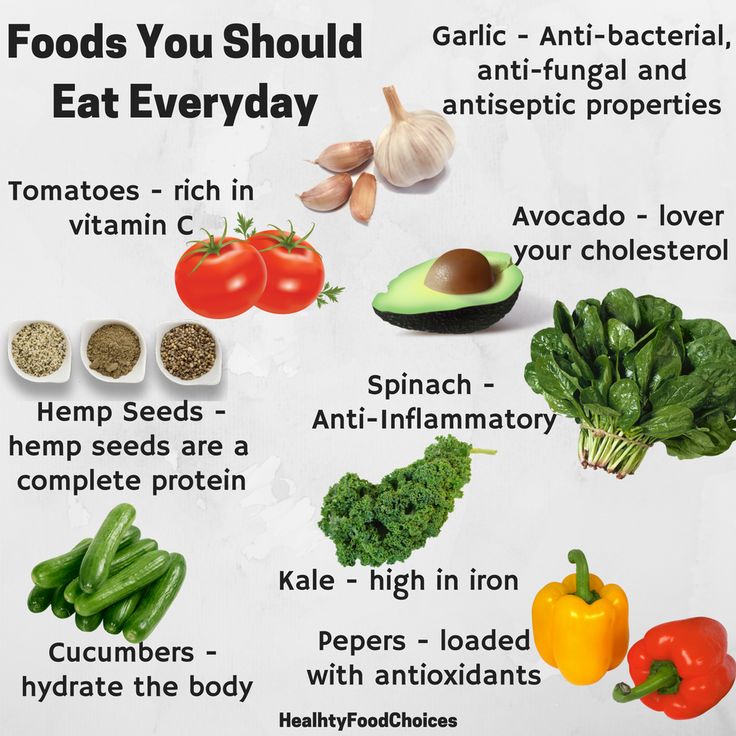 You can scare away the pest by alternating rows of spinach with rows of beets, which the fly does not tolerate. However, do not sow spinach in an area where the beets have just been harvested, as it can get root rot.
You can scare away the pest by alternating rows of spinach with rows of beets, which the fly does not tolerate. However, do not sow spinach in an area where the beets have just been harvested, as it can get root rot. Green or brown cutworm is one of the worst leaf-destroying pests of spinach. You can fight caterpillars by treating bushes with tobacco or pepper infusion, as well as infusion of tomato tops. And don't forget to weed the garden regularly.
Beet fly also lays eggs on spinach leaves. Destroy it by treating the plant with a two percent solution of Phosphamide.
Aphid is a sucking insect that makes punctures in young leaves of plants, sucking juice out of them, and often infecting them with viral diseases. Processing spinach with an ash-soap solution will help you cope with aphids: 200-300 g of ash should be boiled in a bucket of water for 30 minutes, then cool, strain and add 40 g of grated soap or liquid dishwashing detergent.
 Most likely, you will not be able to get rid of aphids at once, but if you spray the spinach with an ash-soap solution 4-5 times with an interval of several days, the aphids will disappear.
Most likely, you will not be able to get rid of aphids at once, but if you spray the spinach with an ash-soap solution 4-5 times with an interval of several days, the aphids will disappear. Medvedka is a large and dangerous pest that feeds not only on plants, but also on small insects. She can move underground, on the ground and even through the air, which makes it very difficult to fight her. Nevertheless, it must be destroyed, since not only spinach, but also other garden and garden plants can suffer from this pest. The main thing is to find its nest and all the passages to it in the footsteps of the bear, and the tracks are best seen after rain. The discovered nest must be very carefully dug out so as not to frighten away the insect in it, put into a bucket and burned, and a drug to destroy the bear or pour soapy water into each passage in case there is no pest in the nest.
Babanukha is a cabbage or horseradish leaf beetle that also eats spinach leaves with pleasure.
 These bugs are best picked by hand and destroyed, and after harvesting, it is advisable to dust the spinach with a mixture of wood ash with hot red pepper powder and dry mustard.
These bugs are best picked by hand and destroyed, and after harvesting, it is advisable to dust the spinach with a mixture of wood ash with hot red pepper powder and dry mustard. Types and varieties of spinach
According to the maturation period, garden spinach varieties are divided into early-ripening, mid-ripening and late-ripening. The best early maturing varieties include the following:
- Gaudry is a variety ripening for food in 2-3 weeks. It can be sown both in early spring and late autumn, both in open and closed ground. The diameter of the rosette of leaves of the Gaudri variety is about 23 cm;
- Gigantic is one of the best known varieties that produces leaves two weeks after sowing. This variety is one of the best for canning. Rosette of elongated fleshy leaves sometimes reaches a diameter of 50 cm;
- Virofle - an early maturing French variety, prone to the early formation of a flower arrow.
 The rosette of oval, fleshy, tender and smooth, greenish-yellow leaves reaches a diameter of 30 cm. The plant is resistant to cold, so it can be sown in early spring;
The rosette of oval, fleshy, tender and smooth, greenish-yellow leaves reaches a diameter of 30 cm. The plant is resistant to cold, so it can be sown in early spring; - Stick is a high-yielding variety cultivated in our country since 1995, used both for fresh consumption and for canning. The rosette of leaves up to 19 cm long and up to 14 cm wide is half raised and reaches a diameter of 30 cm.
Of the mid-season varieties most often grown:
- Matador - frost-resistant and moisture-loving, as well as not prone to early bolting, a productive variety of Czech selection, which gives leaves already three weeks after sowing. The plant has a medium-sized compact semi-vertical rosette consisting of smooth, glossy oval grey-green leaves;
- Bloomsdalesky is a new variety of Dutch selection, resistant to bolting, with a high rosette with a diameter of about 25 cm. Leaves of deep dark green color, smooth, juicy and fleshy, in slightly pronounced bubbles;
- Krepysh is a high-yielding frost-resistant variety, not prone to early bolting, with a rosette of about 25 cm in diameter of semi-raised, glossy, obovate green leaves with slight vesicles.
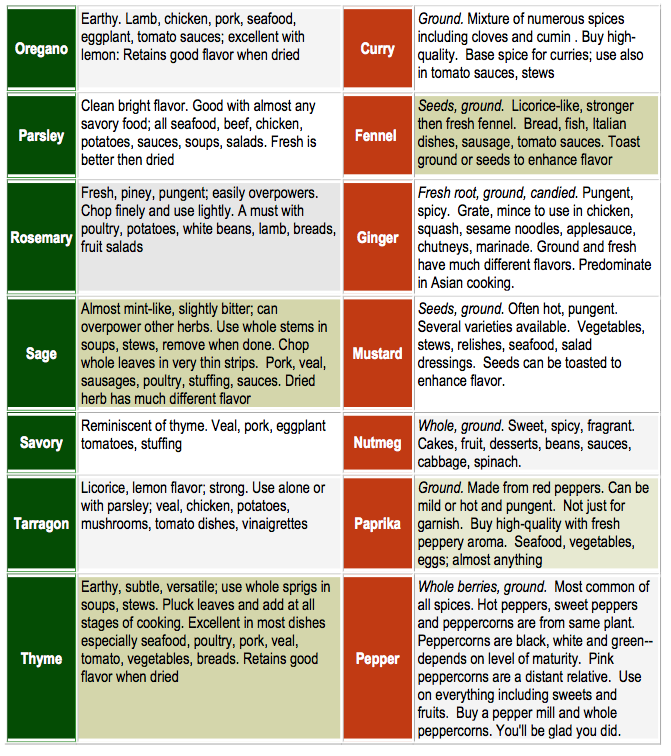
Late-ripening varieties of spinach include:
- Victoria is a moisture-loving and high-yielding variety with resistance to peronosporosis and bolting, which gives foliage 30-35 days after sowing. This plant has a compact rosette with a diameter of 14-19cm with dark green with a bluish tinge, strongly bubbly leaves up to 10 long and up to 7 cm wide;
- Spokane is a high yielding hybrid dutch variety that is resistant to flowering and is recommended for both fresh consumption and canning. It has rounded, wavy, wrinkled-bubbly dark green leaves 10-14 cm long and 6-11 cm wide, collected in a compact medium-sized rosette;
- Varyag – a variety with an elevated compact rosette of large green oval medium-bubbly leaves of a slightly sour taste with medium-length petioles. The variety is suitable for salads and soups.
In addition to those described, spinach varieties such as Khorovod, Povar, Zhirnolistny, Popeye, Nikitos, Normal, Prima, Casta, Melodiya, Mazurka, Virtuoso, Tarantella, Ladya and Dolphin, Puma, Space, Emerald hybrids have proven themselves well.
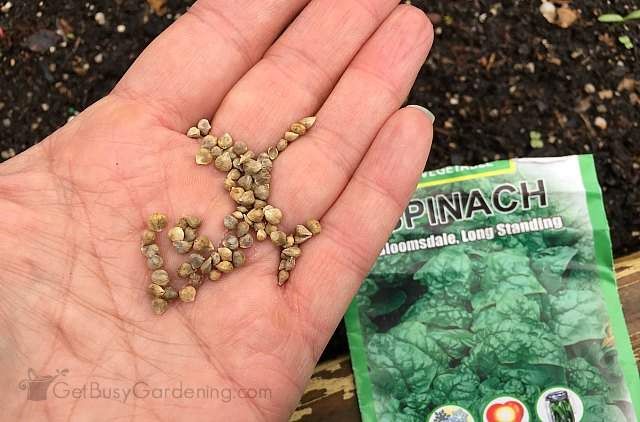
Also known in cultivation is the so-called New Zealand spinach, or tetragonia, an annual plant of the Aizaceae family. This plant is not related to spinach, although the nutritional value and taste characteristics of these plants are very similar, and in some respects tetragonia even surpasses spinach.
But many-leaved spinach, or zhminda, or spinach-raspberry is a relative of garden spinach and is valuable not only for tasty and healthy leaves that are added to soups and salads, but also for berries similar to mulberry, from which jelly, compote and jam are cooked.
Malabra or Ceylon spinach, or Basella, from the Basella family, is a herbaceous plant, a creeper whose fleshy leaves are tasty both raw and cooked. A refreshing drink is obtained from the infusion of the leaves. In nature, Basella grows in the tropics and subtropics of Africa and America, and in our climate it can be grown in the garden as an annual plant.
Benefits and harms of spinach
Medicinal properties of spinach
Spinach has many medicinal properties.
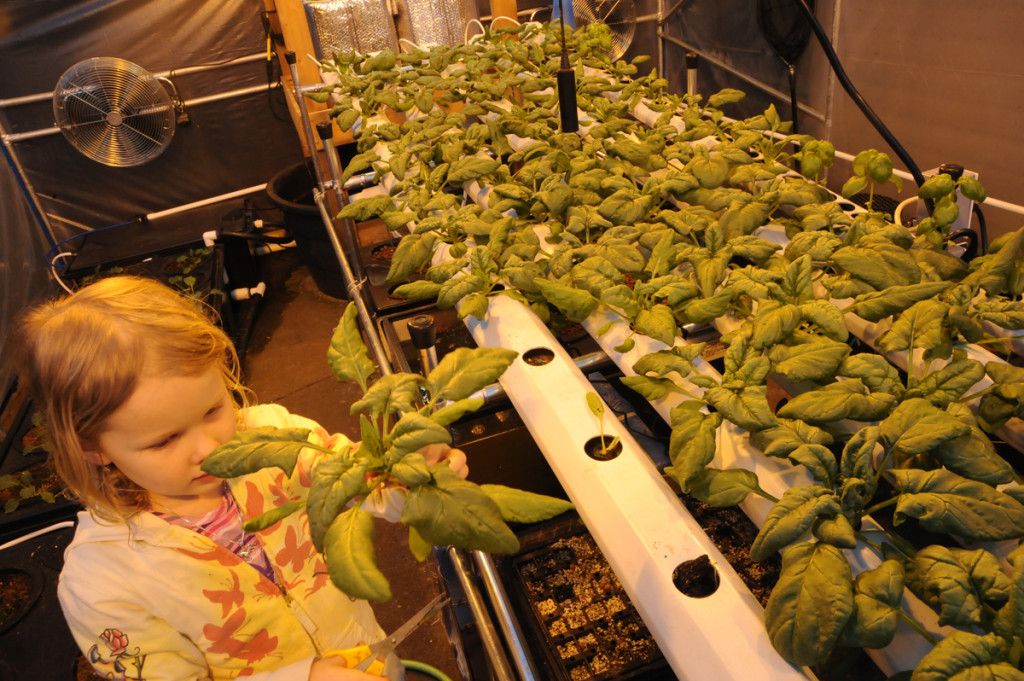 Why is spinach useful? What valuable substances are contained in its leaves? They include carbohydrates, proteins and fats, fiber, organic, unsaturated and saturated acids, sugars, starch, vitamins A, C, H, E, PP, K, B vitamins, sodium, magnesium, phosphorus, iron, copper , iodine, zinc, potassium, selenium and manganese.
Why is spinach useful? What valuable substances are contained in its leaves? They include carbohydrates, proteins and fats, fiber, organic, unsaturated and saturated acids, sugars, starch, vitamins A, C, H, E, PP, K, B vitamins, sodium, magnesium, phosphorus, iron, copper , iodine, zinc, potassium, selenium and manganese. It is important that vitamins C and A contained in spinach are retained even after heat treatment. And the iron in spinach is in a form that is easily absorbed by humans and prevents the formation of cellulite. Due to the fiber contained in spinach, the intestines are cleansed, which helps to get rid of excess weight. Spinach normalizes peristalsis and eliminates constipation.
Spinach is recommended for diseases of the nervous system, anemia, malnutrition, diabetes, enterocolitis, gastritis, hypertension and anemia. Since the plant has a laxative, diuretic, anti-inflammatory and tonic effect and is perfectly absorbed by the body, it is useful for those recovering from a serious illness, pregnant women and children.

Spinach strengthens the heart muscle and relieves insomnia, and due to the lutein contained in the leaves, it clarifies vision, reduces fatigue and increases efficiency.
Fresh spinach juice helps cleanse the body, replenishes energy reserves, stimulates the functioning of organs - the liver, intestines, kidneys. With inflammation of the gums, they rinse their mouth, and with sore throats - the throat. Fresh chopped spinach leaves are applied externally for abscesses and stings of bees, wasps and other insects, and a paste of spinach leaves boiled in olive oil treats eczema and burns, removes freckles and whitens the skin of the face.
Spinach is eaten fresh, boiled or baked and is used in many complex dishes, snacks and sauces.
Spinach - contraindications
Spinach contains high amounts of oxalic acid, therefore it is contraindicated for people with problems with the urinary tract, suffering from urolithiasis, nephritis and similar diseases. Spinach is not useful for gout, diseases of the duodenum, liver, biliary tract and rheumatism.

It should be said that there is not so much oxalic acid in young leaves - it accumulates in mature leaves, so you can avoid problems by eating only young leaves of the plant, that is, the so-called baby spinach.
Literature
- Read related topics on Wikipedia
- Peculiarities and other plants of the family Amaranthaceae
- List of all species on The Plant List
- More information on World Flora Online
For large garlic: what fertilizer is important at this stage?
Sorrel: growing in the garden, propertiesSections: Garden plants Amaranth (Schiritsaceae) Plants on Ø Leaf
After this article is usually read
Add a comment
planting and care in the apartment
As a rule, spinach is grown in open ground , but in order to get useful macro- and microelements even in the middle of winter, many people sow spinach seeds at home and grow them on the windowsill.
 If you can follow the simple rules of sowing and maintenance (create the necessary light and temperature conditions), you will have fresh and juicy greenery all year round, even if you do not have a summer house.
If you can follow the simple rules of sowing and maintenance (create the necessary light and temperature conditions), you will have fresh and juicy greenery all year round, even if you do not have a summer house. How to grow spinach at home on the windowsill will be described in detail below.
By the way! Many people don't like spinach because it tastes like "grass with grass" (not sour like sorrel). Indeed, this is a tasteless plant. But the neutral taste is great, you can make such delicious dressings! For example, the Caesar salad with spinach is very unusual.
Contents
- 1 What varieties of spinach are suitable for growing on a windowsill
- 2 How to plant spinach on the windowsill: Features, conditions and step -by -step instructions
- 2.1 Capacity for growing
- 2.2 In what soil to plant
- 2.3 Pre -preparation of seeds
- 2.4 Direct landing
- 3 Cross -poll pot for growing in an apartment
- 4 How to care for spinach on the windowsill at home
- 4.
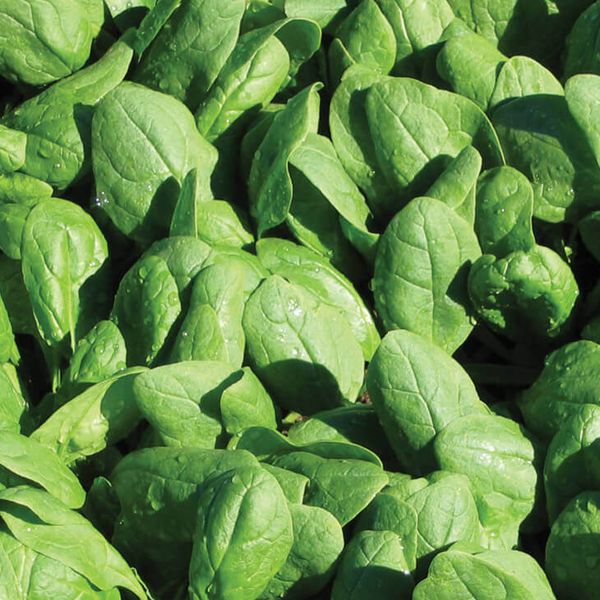 1 What should be the place for growing: light and temperature
1 What should be the place for growing: light and temperature - 4.2 Watering
- 4.
- 5 Emergence and Harvest Timing of Homemade Spinach
Which Spinach Varieties Are Suitable for Windowsill GrowingAnd for this, first of all, carefully study the instructions on the package - familiarize yourself with the characteristics of the varieties in order to choose the most suitable for indoor cultivation.
As a rule, the following varieties of spinach are used for sowing, which tolerate greenhouse conditions well and give a bountiful harvest:
- Fat-leaved.
- Gigantic .
- Matador.
- And also many others, for example, Krepysh, Virofle, Stoik, Victoria, Ilya Muromets. There is even a very interesting strawberry spinach .
To determine the most suitable variety, it is worth planting several packages of seeds in different containers.
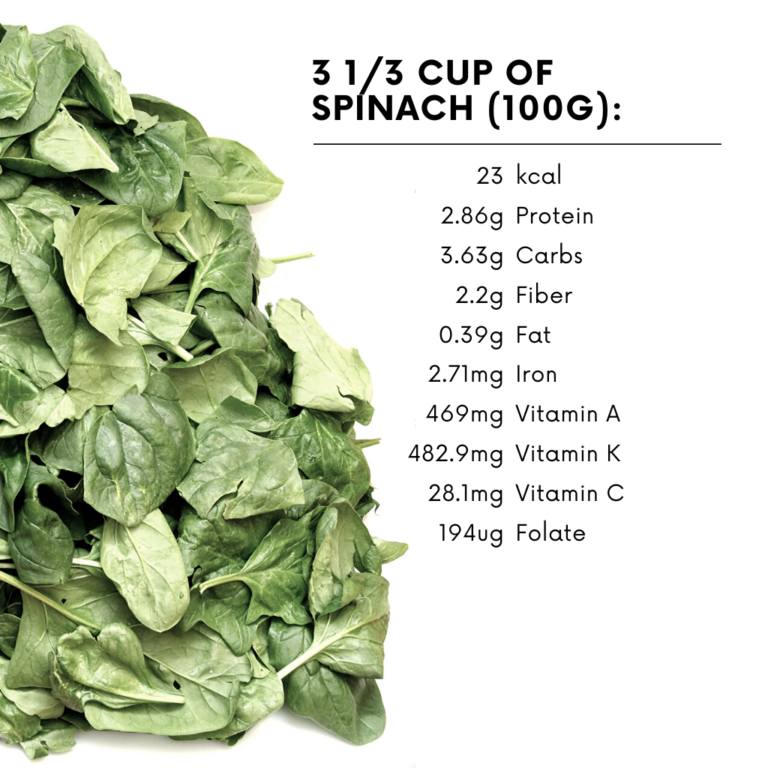 Only after that you can understand which kind of spinach will suit you the most according to all criteria.
Only after that you can understand which kind of spinach will suit you the most according to all criteria.
How to plant spinach on the windowsill: features, conditions and step-by-step instructionsAfter choosing the desired variety, you should start sowing work, namely: preparing the container, growing soil, soaking the seeds. To do this, planting spinach at home requires approaching with skill and performing all stages of cultivation according to certain rules.
Growing containerThe root system of spinach, for example, unlike sorrel, is quite shallow, so the container requires a small depth (12-15 cm).
Naturally, the pot must have drainage holes to drain excess moisture.
In addition, you can add a small layer of expanded clay or foam to the bottom of the planting container as drainage.
What soil to plant inSpinach will grow well only in neutral soil.
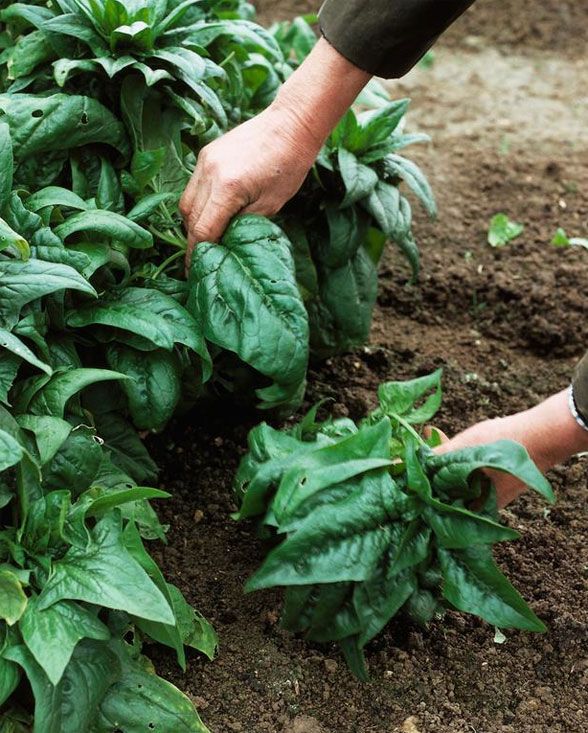
In other words, spinach loves soil with an acidity level of around 6-7 pH!
You can purchase ready soil for growing vegetables such as cabbage, pumpkin, beans, peas.
Or make your own. To do this, take a neutral garden soil and mix it with compost or humus, as well as river sand.
Tip! It is recommended to decontaminate any soil, even purchased soil, in advance using one of the methods, for example, by steaming the oven so that all soil pests die under the influence of high temperatures. Then additionally shed with a solution of Fitosporin .
Seed preparationIt is not recommended to plant spinach with dry, unprepared seeds (unless it is pelleted, i.e. already processed seeds). The seeds have a dense external structure, so they should be pre-soaked for a day or two in water at room temperature (above 18 degrees).

And then (optional) hold for another 20-30 minutes in a weak solution of potassium permanganate to disinfect seedlings from diseases.
Direct plantingStep-by-step instructions for sowing spinach seeds for further cultivation at home:
- Drainage and soil are poured into the planting container.
- Barbs are made 1.5-3 cm deep.
- Sowing seeds at a distance of 2-3 centimeters from each other.
- Next, you need to fill the rows with soil.
- Spend it (soil) moistening. For example, you can spray from a spray bottle.
- To create greenhouse conditions, the container is covered with film or glass.
- The pot is placed in a warm (+18..+20 degrees) and dark place.
- When shoots appear, the shelter (greenhouse) is removed, and the container itself is moved to a bright place - on the windowsill.
Please note! In the next video, the author uses unsuitable soil to grow spinach (wrong acidity).
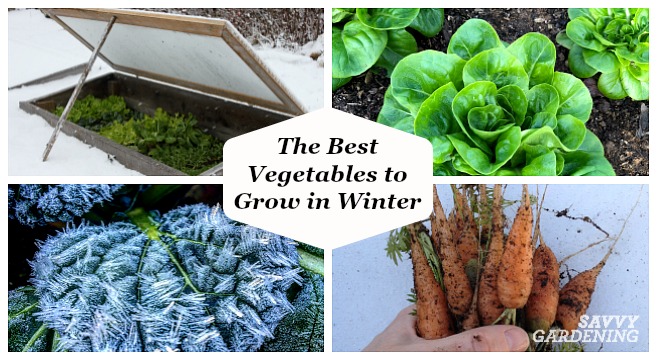 In general, everything is shown very well and clearly.
In general, everything is shown very well and clearly. Video: sowing spinach seeds for growing on the windowsill
Transplanting spinach from the open field into a pot for growing in the apartmentBy the way! It is not necessary to grow spinach from seeds, it is much easier to take and transplant it from the garden.
All you need is to dig up the bushes in autumn and transplant them into a pot.
Further care and cultivation are carried out similarly to those sown with seeds (more on this later).
How to care for spinach on the windowsill at homeSpinach care is quite simple - maintain optimal light and temperature conditions, as well as water on time.
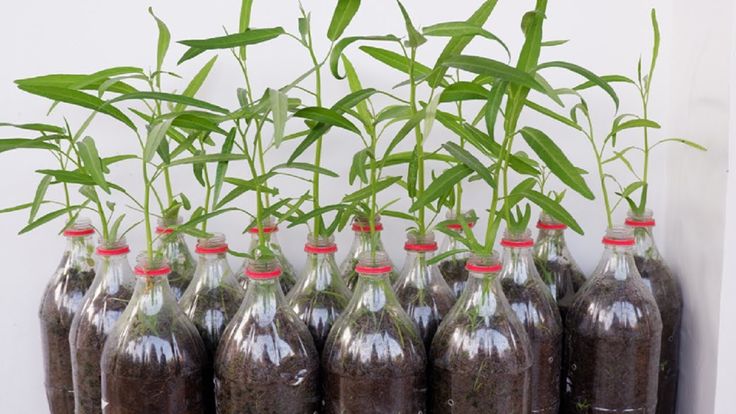
What should be the place to grow: light and temperatureSpinach is a relatively light-loving plant. For him, it is recommended to choose a well-lit southern window sill (either western or eastern, but better at least southwestern or southeastern) .
Optimum day length is 12-14 hours.
But in order for the sun to not burn too much on especially hot days, burning tender leaves, it is recommended to shade it.
By the way! Spinach generally does not like direct sunlight and a lot of sunlight, besides, it becomes bitter …
In late autumn, winter and early spring days, the shrub does not have enough daylight hours, especially when it is raining or just overcast outside. Therefore, for growing spinach indoors, it is recommended to additionally install phytolamps or full-spectrum LED lamps.
Spinach does not require very warm conditions.
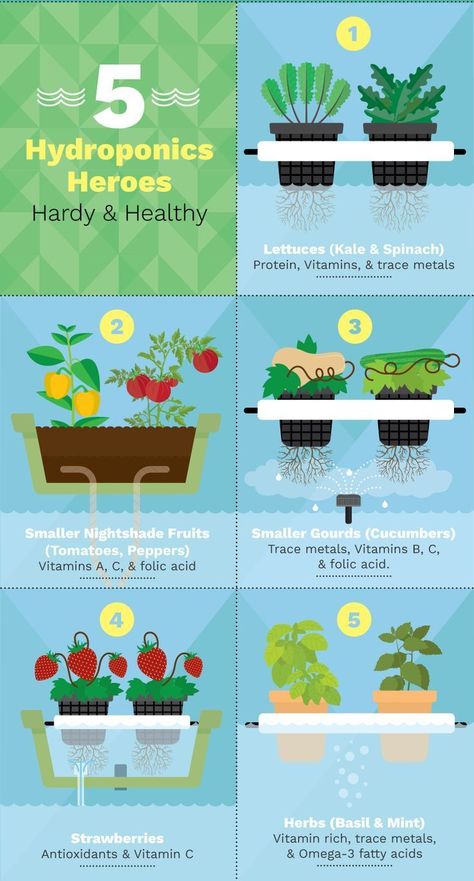 At a temperature regime of +15..+18 degrees , the leaves of the plant quickly gain strength and grow to optimal sizes.
At a temperature regime of +15..+18 degrees , the leaves of the plant quickly gain strength and grow to optimal sizes. A grown plant with 4-5 leaf blades can be grown at a lower temperature of +10..+14 degrees, but in this situation the growth of leaf blades will be somewhat slowed down.
Therefore, an insulated balcony or loggia, where the temperature is slightly lower than room temperature, is quite suitable for growing.
In too warm conditions, spinach stalks will quickly wither, so it is recommended to maintain an optimal cool temperature.
WateringWatering should be carried out quite often and plentifully, spinach does not tolerate drying out of the soil.
It is strongly recommended to periodically spray overgrown leaf blades. This will saturate them with nutrient moisture and improve their appearance.
The low level of humidity provokes bolting, spinach throws out flower stalks, which should be promptly disposed of so that the plant does not waste extra strength.
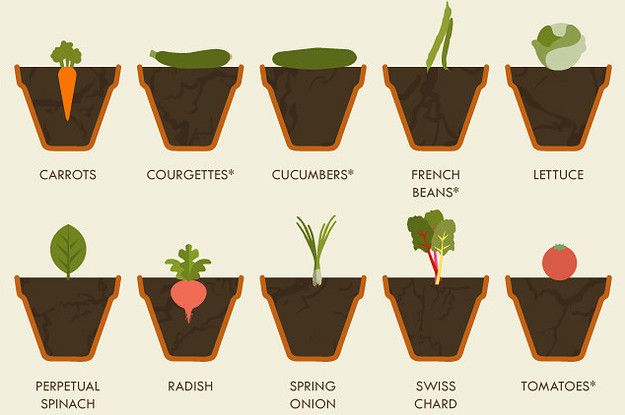
Spinach does not require any special feeding.
Germination and harvesting time of domestic spinachAfter sowing spinach, you can see its first shoots, even with pre-treatment (soaking), in about a week (sometimes earlier).
And the actual cutting of foliage (harvesting) will begin only when the plants have fully formed succulent leaves. There will be 5-8 pieces, 8-10 centimeters long. In early ripening varieties, this moment occurs approximately 30 days after the first shoots.
Tip! In order not to interrupt the process of constantly obtaining useful spinach foliage, you can regularly make new crops.
At harvest time, the leaves can be cut off completely, leaving only the outermost young leaves.
Harvest by gently breaking the stem or cutting with scissors.
Do not pull or pluck the foliage as this may damage the root system.

Learn more


